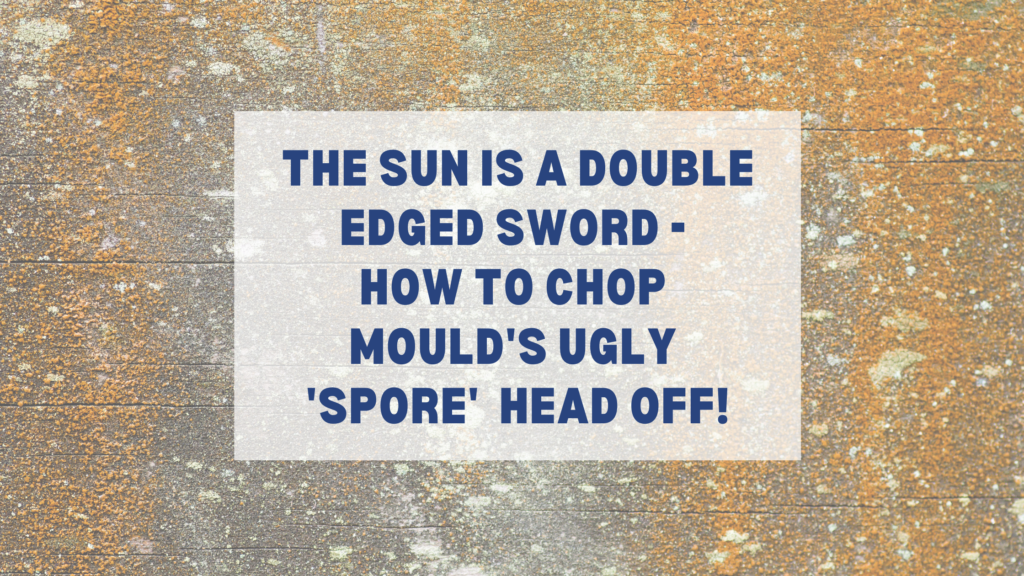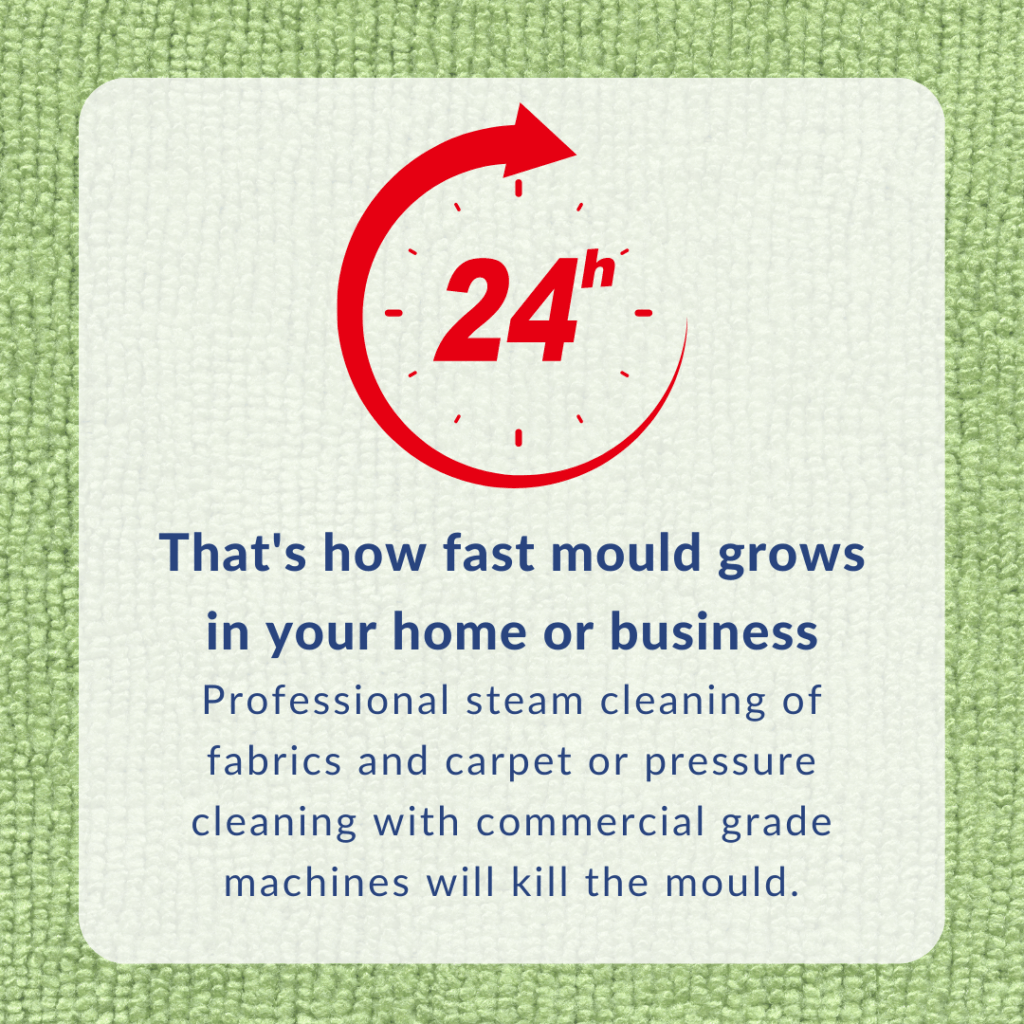Chop mould’s ugly spore head off!

The seemingly never ending ‘weather events’ have us all feeling a bit over-it! But what happens next after so much wet weather on the Central Coast? Well not many are immune to the “M-word”. Mould. Argh!
When the sun finally comes out it’s a double edge sword… it shines its lovely warm light on all these mould spots growing in your home on everything from the walls, carpet, table legs even inside cupboards… it’s gut wrenching. Or you pull something out of the cupboard and notice a green film or green spots all over it and you just know there’s a hell of a lot more than what you can see right then hiding elsewhere.
It’s even in the air
What else do we have to deal with in this extreme weather event? Airborne mould spores. Mould spores especially if you breathe them in, can cause all sorts of health problems from a runny nose to asthma attack.
The green stuff thrives
It thrives in warm and/or damp humid environment. It can be hidden below or within or carpet and it can be microscopic so you can’t even see it at all.
Where it gets in
It gets into your home in a variety of ways through the vents, your air condition, basically can cling to anything and exists where there is moisture/damp and or humidity.
It develops super fast like within 24hrs!

Asthma sufferers may find their symptoms worsen when they are exposed to damp areas that contain mould.
Chop it
To stop it or chop it heads off starts with great ventilation, seal leaks, dry any damp or moist surfaces, remove water that might be sitting around (if you can)!
According to this article https://www.healthsafetyconsultants.com.au/mould-inspection-testing/ you can take action to control mould growing in your home, office or business by following the below steps.
Mould growth can be controlled by:
- Controlling humidity levels
- Stopping rising damp
- Promptly fixing leaky roofs, windows, and pipes
- Thoroughly cleaning and drying after flooding
- Ventilating condensation areas such as shower, laundry, and cooking areas
- Keeping subfloors dry, ventilated and if problematic, under negative pressure.
NSW Health also recommends a variety of measures to remove the mould and always wear protective clothing and good ventilation. The full list can be found here but good old vinegar (4 parts) and one part water is the best for surfaces but always test in small spot first just to be sure.
But what about lounges, bedheads, rugs and flooring?
For absorbent materials like carpets and flooring its recommended to get it professionally cleaned.
Our other top tips are in our earlier post Eliminating Mould – the other ‘F-word’
What if it’s actual water damage?
We recommend acting immediately to avoid long term damage setting in after any kind of water damage. Read our Blog post on what to do first when water damage strikes. For more information on what you need to consider for your water damage repair plan you can read our tips here.
Citrus Clean Central Coast can help get your mould issues under control.
Whether it’s removing mould from carpet and upholstery by steam cleaning or a commercial grade pressure clean, we’re here to help. Call us for a free quote on 4392 0926 today!

